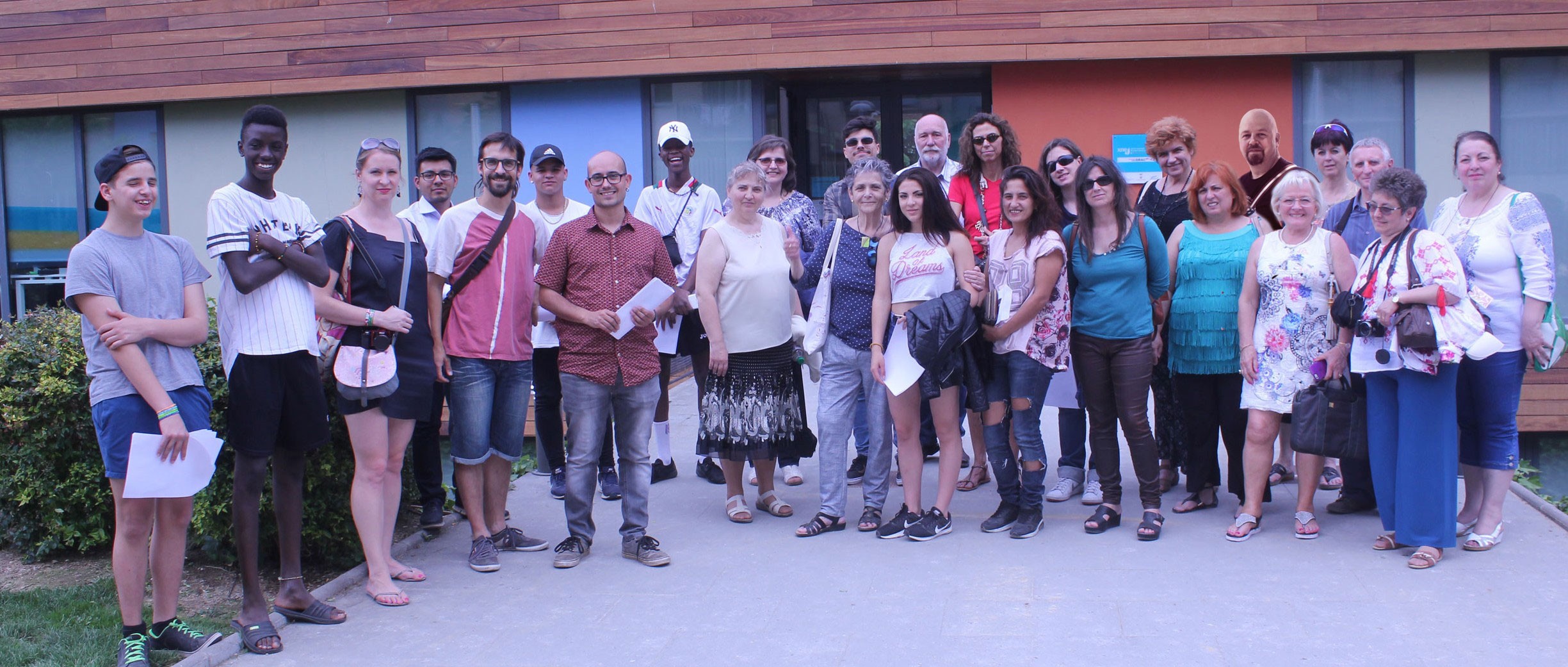The PDF Guide can be read and downloaded HERE
Introduction to the Guidelines
Open the Doors was implemented between September 2015 and August 2017. As an Erasmus+ Project, the aim was for the project to be experiential. We experienced new didactics for NEET prevention (new opportunities for youth in risk of social exclusion) through building 21st century didactic capacity among the professional staff involved in the project settings: teachers, social educators and youth educators.
The Project mission was based on the belief that, given the appropriate learning contexts and opportunities, potential NEET youth and NEET youth are indeed able to develop strong intellectual, creative and learning capacities. The project was informed by an assumption that an entrepreneurial approach would underpin initial thinking. However, as the European Commission says: “Teachers cannot teach how to be entrepreneurial without themselves being entrepreneurial. Entrepreneurial competency and skills can be acquired or built only through hands-on, real life learning experiences”. (Entrepreneurial Education: A Guide for Educators, 2013). Consequently, the Project was designed around an innovative and practical way of working with youth at risk of social exclusion.
The future-oriented methodologies were:
- Real-life learning: building capacity through engaging in problems and challenges important for the community and the surrounding world.
- Learning in mixed realities: building capacity through fully integrating physical and virtual realities in the work processes, also inviting a linking of the local and global.
- Working with the community: building capacity through creating partnerships with a variety of community players from education and private enterprises to NGO’s and local authorities.
- Entrepreneurial initiative taking: building capacity through creating projects based on identifying community needs and interest and taking action on these needs and interests.
- Using creative technology: building capacity through documenting their work and learning processes with creative media and sharing experience through professional, social and gaming networks.
The Guidelines contain the experiences and results from those different methodologies. Capacity building of the educators came from the interaction between such innovative practical experimentation and the collective reflections systematically included in the project.
We have been a partnership of nine organizations: five Practice partners, three Knowledge Partners and one Quality Assurance Partner.
Using the Guidelines
The Guidelines are not intended to provide or replace the real-life experiences suggested above. Instead, they offer a series of examples of missions and explanations of what made them successful. The structure of the Guidelines reflects the thinking and working of the Open the Doors partners. At the outset, we were aware that working with young people not in employment, education or training meant different things to different people and was similarly variously conceptualised in different countries and cultures. We began, therefore, by exploring the profiles of the young people with whom we work and what it meant to create the choices and chances that would help them. In other words, what it meant to work with a mission.
We were also concerned that our work should not begin with theory but be led by practice, which should then inform theory. Open the Doors, therefore, was an exercise in theory building as it arose from working with the missions and our own continued learning. If the missions provide inspiration and motivation for similar projects, then by all means explore the possibility of creating a similar mission of your own. Do not try to import them from here and simply replicate them but consider what would be appropriate in your own context. It is important, therefore, when thinking about the missions not only to consider what took place but how they were created and progressed and why they were successful.
The second section of the Guidelines are the five major themes that arose from our experiences of and reflections on the practical initiatives; the missions. Understanding our various contexts, how our thinking and mindset developed of the life of Open the Doors and how we worked with young people in the missions will help you understand a mission as we conceptualise it and support you in creating your own.
We also provide the partners’ narrative account of working in Open the Doors. We have also included our thoughts on the goals, the methodologies of Open the Doors that became increasingly important as the project progressed, and which developed through our growing understanding of the missions and our continued learning regarding working with young people at risk of social exclusion. This section also contains a brief account of the story of Open the Doors itself and some inspirational materials that provided insight into the distinctive way of working in the project and motivated us to overcome difficulties and barriers and seize the opportunities that arose in our different contexts. The sections in the Guidelines, therefore, can be used as materials for thinking. Each section provides opportunities for youth workers, teachers and students to create their own experiential learning opportunities using the model of a mission.







